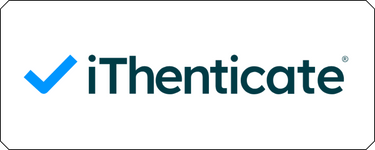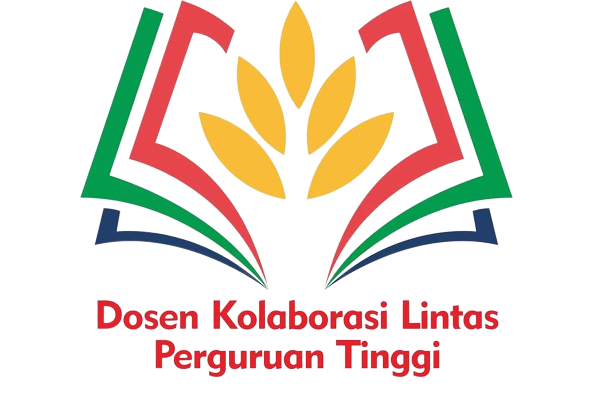The Penta-Helix Approach in Implementing the Policy of Revitalizing Traditional Markets in Tanjungpinang City
DOI:
https://doi.org/10.69812/jgs.v1i2.47Keywords:
Penta-Helix Approach, Implementation, PolicyAbstract
Traditional markets are crucial centers for trade and economic activities within the community. However, the rise of modern markets has led to a decline in the popularity of traditional markets among the public. Therefore, revitalization policies for traditional markets are necessary to enhance their quality and provide significant benefits to the community. This study employs a descriptive qualitative research method with a post-positivist approach. The findings indicate that the Penta-Helix approach is effective in implementing revitalization policies for traditional markets in Tanjungpinang City. The Penta-Helix model can engage five key actors: the government, industry, academia, society, and media, in formulating, executing, and evaluating the revitalization programs for traditional markets in Tanjungpinang. The impact of revitalizing traditional markets in Tanjungpinang is quite significant, including increased visitor numbers, improved environmental health, enhanced product quality, job creation, and heightened community pride in their traditional markets. The implementation of revitalization policies involves reorganizing merchandise, providing cleaning services, controlling product quality, developing local products, and introducing derivative programs. Strong support and commitment from local government and all stakeholders are essential in overcoming challenges such as political factors, limited resources, and a lack of public awareness. Recommendations emphasize the need for proactive efforts and active roles from local government and all stakeholders in executing effective and sustainable policies.
Downloads
References
Adishakti, L. (2002). Revitalisasi bukan sekedar beautification. Urban and Regional Development Institute.
Alvaro, R., & Zahara, L. (2018). Revitalisasi pasar rakyat; upaya menggerakkan perekonomian rakyat. Buletin APBN : Pusat Kajian Anggaran Badan Keahlian DPR RI, 3(16), 9–14. www.puskajianggaran.dpr.go.id
Anggreini, A. P. (2018). Revitalisasi pasar tradisional dalam pemberdayaan pedagang pasar panjerejo kecamatan rejotangan kabupaten tulungagung. Repositoty Universitas Airlangga.
Arums, R. (2016). Implementasi kebijakan revitalisasi pasar tradisional dipasar bendeng kota tanggerang [Skripsi]. Universitas Sultan Ageng Tirtayasa.
Clark, A. M. (1998). The qualitative-quantitative debate: moving from positivism and confrontation to post-positivism and reconciliation. Journal of Advanced Nursing, 27(6), 1242–1249. https://doi.org/10.1046/J.1365-2648.1998.00651.X
Engkus. (2020). Implementasi kebijakan revitalisasi pasar tradisional sarijadi Kota Bandung. Jurnal Governansi, 6(1), 9–16.
Giantari, I. G. A. K., Surya, I. B. K., Yasa, N. N. K., & Yasa, I. B. A. (2018). Development and revitalization strategies for traditional markets in Bali. International Journal of Social Economics, 45(7), 1058–1070. https://doi.org/10.1108/IJSE-09-2017-0414
Groff, R. (2004). Critical realism, post-positivism, and the possibility of knowledge. In Volume 11 dari Routledge Studies in Critical Realism. Routledge.
Hidayat, A. (2018). Evaluasi program revitalisasi pasar tradisional di pasar sentiong balaraja mas baru kabupaten tanggerang [Skripsi]. Universitas Sultan Ageng Tirtayasa.
Khotimah, C. K., Rahayu, M. J., & Putri, R. A. (2017). Efektivitas revitalisasi pasar regional di Kabupaten Klaten. Jurnal Pengembangan Kota, 5(1), 28–36. https://doi.org/10.14710/jpk.5.1.28-36
Kim, M.-J., & Lee, Y.-J. (2015). A study on the status of domestic jewelry market and Revitalization -Focused on Namdaemun market-. Korean Journal of Human Ecology, 24(3), 423–436. https://doi.org/10.5934/kjhe.2015.24.3.423
Laretna, A. (2002). Revitalisasi bukan sekedar beautification. Urban and Regional Development Institute, 13.
Legowo, M., Sadewo, F. X. S., & Jacky, M. (2009). Pedagang dan revitalisasi pasar tradisional di surabaya : studi kasus pada pasar wonokromo dan pasar tambah rejo , surabaya. Masyarakat, Kebudayaan Dan Politik, 22(2), 179–187.
Lukito, Y. N. (2018). Revitalisasi ruang pasar tradisional melalui pendekatan desain dan interaksi pengguna ruang. Deepublish.
Mangeswuri, D. R., & Purwanto, N. P. (2010). Revitalisasi pasar tradisional di Indonesia. Jurnal Ekonomi & Kebijakan Publik, 2(1), 313–336.
Miles, M., Huberman, M., & Saldana, J. (2014). Qualitative data analysis. SAGE Publications.
Prastyawan, A., & Isbandono, P. (2018). The role of local governments in traditional market revitalization. Journal of Physics: Conference Series, 953(1).
Putra, R. D. D., & Rudito, B. (2015). Planning Community Development Program of Limbangan Traditional Market Revitalization with Social Mapping. Procedia - Social and Behavioral Sciences, 169, 143–150. https://doi.org/10.1016/J.SBSPRO.2015.01.296
Reily, M. (2019). Kejar target revitalisasi, Pemerintah turunkan klasifikasi pasar. Katadata. https://katadata.co.id/berita/2019/02/20/kejar-target-revitalisasi-pemerintah-turunkan-klasifikasi-pasar
Rosmayanti. (2018). Revitalisasi pasar rakyat dinilai berhasil, Sejumlah daerah belajar ke denpasar. Warta Ekonomi : Perspektif Baru Bisnis & Ekonomi. https://www.wartaekonomi.co.id/read198308/revitalisasi-pasar-rakyat-dinilai-berhasil-sejumlah-daerah-belajar-ke-denpasar.html
Sandharini, M. P., & Marom, A. (2016). Partisipasi masyarakat dalam revitalisasi pasar peterongan di kota semarang. Journal Of Public Policy And Management Review, 5(3), 233–247. https://doi.org/10.14710/jppmr.v5i3.12489
Sentanu, I. G. E. P. S., Wijayanto, A. N. M., Firmansyah, F., Mahadiansar, M., & Zeho, F. H. (2021). Local Government Strategy in Fostering Traditional Market Competitiveness through Revitalization (A Study at Pemalang Traditional Market). Proceedings of the 1st Tidar International Conference on Advancing Local Wisdom Towards Global Megatrends, TIC 2020, 21-22 October 2020, Magelang, Jawa Tengah, Indonesia, 163. https://doi.org/10.4108/EAI.21-10-2020.2311906
Sukriswanto, U. (2012). Analisis kelayakan revitalisasi pasar umum Gubug Kabupaten Grobogan [Thesis]. Universitas Diponegoro.
Downloads
Published
How to Cite
Issue
Section
License
Copyright (c) 2024 Yudithia Yudithia, Eiad Yafi, Muhammad Shahid Khan

This work is licensed under a Creative Commons Attribution-ShareAlike 4.0 International License.
You are free to:
- Share — copy and redistribute the material in any medium or format for any purpose, even commercially.
- Adapt — remix, transform, and build upon the material for any purpose, even commercially.
- The licensor cannot revoke these freedoms as long as you follow the license terms.
Under the following terms:
- Attribution — You must give appropriate credit, provide a link to the license, and indicate if changes were made . You may do so in any reasonable manner, but not in any way that suggests the licensor endorses you or your use.
- ShareAlike — If you remix, transform, or build upon the material, you must distribute your contributions under the same license as the original.
- No additional restrictions — You may not apply legal terms or technological measures that legally restrict others from doing anything the license permits.















